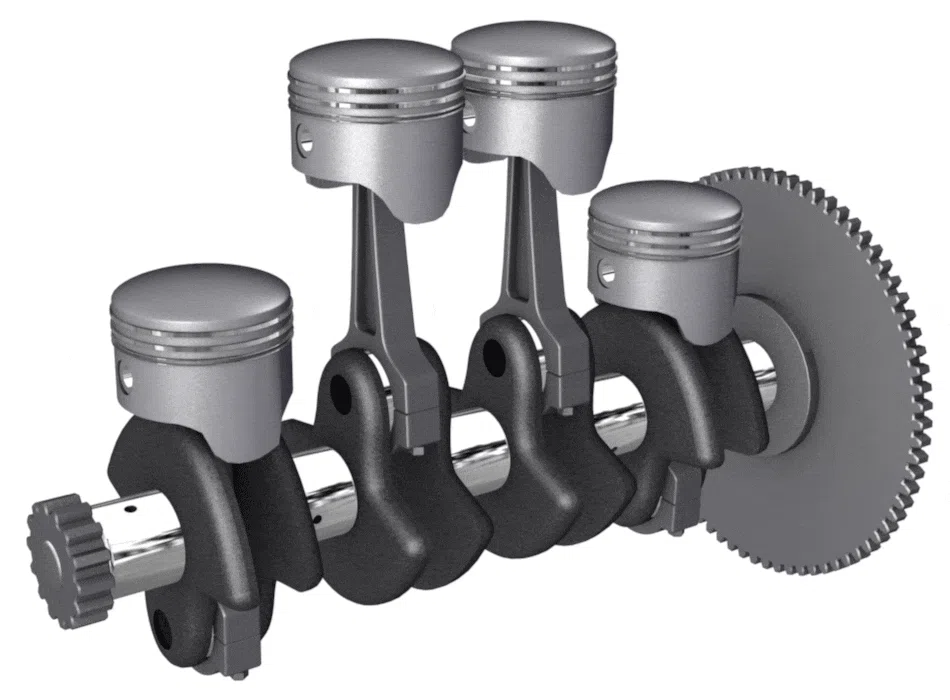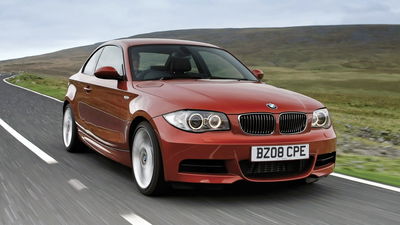Camshafts And Crankshafts Explained The Simple Way

Camshafts and crankshafts play a significant role in an engine’s combustion cycle. They send torque created by the engine’s combustion to the transmission, which turns the vehicle’s wheels. However, there’s extra complexity to these shafts, so let’s find out more about the role of camshafts and crankshafts in a vehicle’s drivetrain.
Camshaft

When the engine is powered, the camshaft is rotated, and lobes contact the rocker arms to open the engine valves. The valves are opened and closed in time with the engine cycle, allowing the air/fuel mixture to enter the cylinder and the exhaust gases to leave. The valves are spring-loaded, meaning that once the lobe has opened the valve, it also closes the valve as the spring decompresses.
The timing of the camshaft is operated via the cambelt or timing belt, which is synchronised with the movement of the engine. The valve opens in time with the engine’s cycle, avoiding any valve or cylinder damage due to mistiming.
Camshafts are typically made from either cast iron or steel and are usually found above the cylinders in an engine. Camshafts are often used in one of two variations: SOHC (Single Over-Head Cam) or DOHC (Dual Over-Head Cam).

A SOHC system completes the intake and exhaust cycle using a single camshaft, whereas a DOHC system features two camshafts: one for intake and another for exhaust. An inline four-cylinder engine with a SOHC would use a single camshaft in the engine’s head, but an engine such as a V8 would use two camshafts overall (one on each side of the V).
The Bugatti Chiron’s W16 engine employs an extreme quad-camshaft setup with 64 lobes, allowing the camshafts to open all 64 valves of the enormous engine and keeping the Bugatti’s beastly powerplant running perfectly.

The job of the crankshaft is to convert the vertical movement from the pistons into a rotation, which transfers energy to the flywheel and the transmission. The crankshaft
uses ‘crankpins’ along its length, which are lined up horizontally to form the ‘stepped’ orientation of the shaft itself.
The crankpins are positioned to allow each cylinder to travel from Top Dead Centre to Bottom Dead Centre and back, transmitting the movement into the shaft’s rotation. The connection between the pistons and the crankpins is through rods connected to the crankpins.

Most of an engine’s power losses occur in the crankshaft area through heat, vibration, noise and friction. In an effort to minimise power losses, engineers try to shorten a crankshaft’s length as much as possible. This is one of the reasons why V-shaped engines grew in popularity compared to in-line engines, as they use a relatively small and controllable crankshaft setup to minimise power losses.

Camshafts and crankshafts are crucial for an engine’s cycle as they are used in the inlet stroke and the exhaust stroke, keeping the different mechanical processes of each cycle in perfect harmony through their belted connection. They may seem like machined billets of steel, but they play an essential role in providing power to a vehicle’s wheels.














Comments
what about single cam engine your only examples are dual overhead cams my question is what is vanos on a bmw is it like IV-Tech or V-Tech
The Veyron only has the most complicated camshafts if you’re about 12 and the Veyron is the fastest, bestest, most expensivist card in your Top Trumps deck.
Desmodromic, pneumatic, VTEC, Koniseggiseggiseggiseggiseggiseggisegg’s fully controllable magnetic systems, Lotus’ 3D lobes….all far more impressive.
Why do you keep reposting old articles?
Pagination